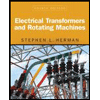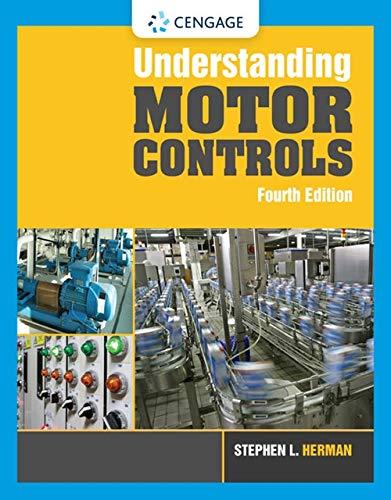
Concept explainers
- Explain staged and continuously variable value timing systems.
The explanation of staged and continuously variable valve timing systems.
Explanation of Solution
Staged variable valve timing:
Staged valve timing consists of a central camshaft, where the lobes push against the wall to open when the camshaft is rotated. Crankshaft provides input to drive cam. Both the valves can be opened when there is a single cam. In the case of two cams, one can be used for intake and the second cam is for exhaust.
Valve timing ideal value point changes with a change in rpm. It is related to engine performance and fuel efficiency.
It involves three cams with different timing and lifts profile.
Stage one- low speed.
Stage two- medium speed.
Stage three- high speed.
Example − Honda VTEC system.
Continuously variable valve timing:
Continuously variable valve timing camshaft is fitted with a phaser. It is mounted in place of timing pulley, sprocket, or gear. The principle of phaser is based on a helical gear set or vanes enclosed in a housing. When the engine is running, it helps in changing time from cam-shaft to crankshaft.
It can be electronically or hydraulic controlled.
Example − Toyota’s VVT-i system.
Want to see more full solutions like this?
Chapter 12 Solutions
Automotive Technology
- S.4. Yandaki şekilde AB çubuğu pirinç ve CD çubuğu alüminyumdur. Sıcaklık 20°C iken iki çubuk arasında 0,5 mm boşluk bulunmaktadır. a) Sıcaklık 95°C'ye yükseldiğinde çubuklardaki normal gerilmeleri, b) Bu durumda AB ve CD çubuklarındaki deformasyonu bulunuz. AB çubuğu için: E 105 GPa, a = 20x 10 1/°C CD çubuğu için: E-70 GPa, a 23,6x 106 1/°C 0.5 300 250 mm Alüminyum Çap 50 mm Çap 75 mmarrow_forwardRecall the head loss equation developed in class for a sudden expansion (See section 7.7 in your textbook). h₁= (V1-V2)² 2g Show all the steps in going from this equation to equation 3 for the minor loss coefficient, K, above.arrow_forwardJust do Questions 7, 9, 11. Here are notes attached for reference. I prefer handwritten solutions. ONLY UPLOAD A SOLUTION IF YOU ARE SURE ABOUT THE ANSWER PLEASE. (If you have once answered this question don't answer it again I am looking for a difference solution)arrow_forward
- This is a tilt and rotation question. Here are notes attached for reference. I prefer handwritten solutions. ONLY UPLOAD A SOLUTION IF YOU ARE SURE ABOUT THE ANSWER PLEASE. I prefer handwritten solutions.arrow_forwardHomework#7arrow_forwardHomework#7arrow_forwardQ3. Consider an inlet flow for an engine with a supersonic inlet Mach number as shown in Figure. below, calculate the total pressure loss between point 1 and 3 if the flow passes first an oblique shock wave and then a reflected shock wave. (30 pts) Моо M∞ = 2.0 && = 30°arrow_forwardJust do Questions 7, 9, 11. Here are notes attached for reference. I prefer handwritten solutions. ONLY UPLOAD A SOLUTION IF YOU ARE SURE ABOUT THE ANSWER PLEASE. (If you have once answered this question don't answer it again)arrow_forwardThis is a tilt and rotation question. Here are notes attached for reference. I prefer handwritten solutions. ONLY UPLOAD A SOLUTION IF YOU ARE SURE ABOUT THE ANSWER PLEASE. I prefer handwritten solutions.arrow_forwardarrow_back_iosSEE MORE QUESTIONSarrow_forward_iosRecommended textbooks for you
 Automotive Technology: A Systems Approach (MindTa...Mechanical EngineeringISBN:9781133612315Author:Jack Erjavec, Rob ThompsonPublisher:Cengage Learning
Automotive Technology: A Systems Approach (MindTa...Mechanical EngineeringISBN:9781133612315Author:Jack Erjavec, Rob ThompsonPublisher:Cengage Learning Precision Machining Technology (MindTap Course Li...Mechanical EngineeringISBN:9781285444543Author:Peter J. Hoffman, Eric S. Hopewell, Brian JanesPublisher:Cengage Learning
Precision Machining Technology (MindTap Course Li...Mechanical EngineeringISBN:9781285444543Author:Peter J. Hoffman, Eric S. Hopewell, Brian JanesPublisher:Cengage Learning Electrical Transformers and Rotating MachinesMechanical EngineeringISBN:9781305494817Author:Stephen L. HermanPublisher:Cengage Learning
Electrical Transformers and Rotating MachinesMechanical EngineeringISBN:9781305494817Author:Stephen L. HermanPublisher:Cengage Learning Understanding Motor ControlsMechanical EngineeringISBN:9781337798686Author:Stephen L. HermanPublisher:Delmar Cengage Learning
Understanding Motor ControlsMechanical EngineeringISBN:9781337798686Author:Stephen L. HermanPublisher:Delmar Cengage Learning
 Automotive Technology: A Systems Approach (MindTa...Mechanical EngineeringISBN:9781133612315Author:Jack Erjavec, Rob ThompsonPublisher:Cengage Learning
Automotive Technology: A Systems Approach (MindTa...Mechanical EngineeringISBN:9781133612315Author:Jack Erjavec, Rob ThompsonPublisher:Cengage Learning Precision Machining Technology (MindTap Course Li...Mechanical EngineeringISBN:9781285444543Author:Peter J. Hoffman, Eric S. Hopewell, Brian JanesPublisher:Cengage Learning
Precision Machining Technology (MindTap Course Li...Mechanical EngineeringISBN:9781285444543Author:Peter J. Hoffman, Eric S. Hopewell, Brian JanesPublisher:Cengage Learning Electrical Transformers and Rotating MachinesMechanical EngineeringISBN:9781305494817Author:Stephen L. HermanPublisher:Cengage Learning
Electrical Transformers and Rotating MachinesMechanical EngineeringISBN:9781305494817Author:Stephen L. HermanPublisher:Cengage Learning Understanding Motor ControlsMechanical EngineeringISBN:9781337798686Author:Stephen L. HermanPublisher:Delmar Cengage Learning
Understanding Motor ControlsMechanical EngineeringISBN:9781337798686Author:Stephen L. HermanPublisher:Delmar Cengage Learning